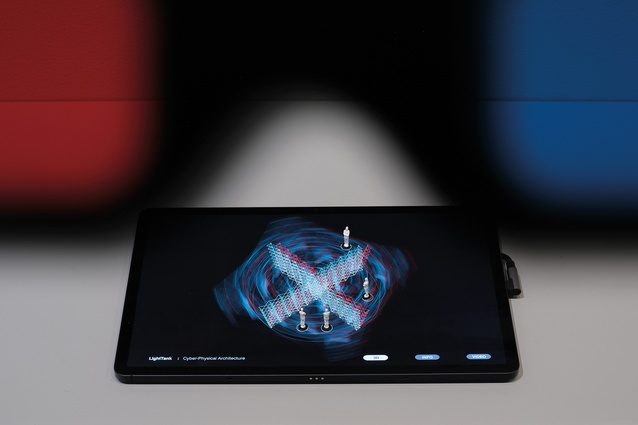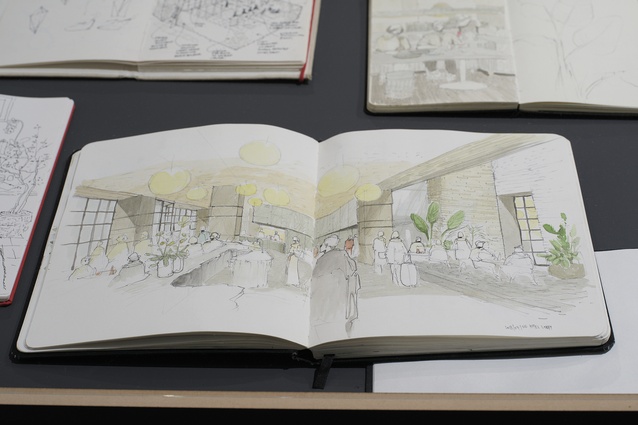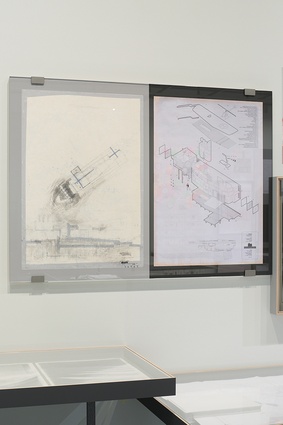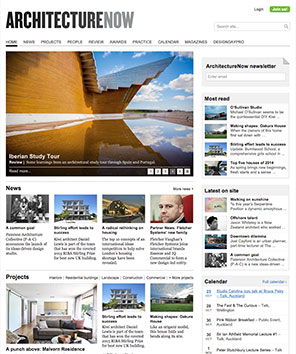Rendered Futures: Drawing Architecture 28 June–24 August 2025 Objectspace, Auckland
Rendered Futures: Drawing Architecture, an exhibition of architectural drawings, staged by Auckland craft and design gallery Objectspace, was timely and thought provoking.
Rendered Futures: Drawing Architecture, an exhibition of architectural drawings, staged by Auckland craft and design gallery Objectspace, was timely and thought provoking. Opportune, because, in this winter of generalised discontent, it showed some love to a profession struggling with the consequences for the construction industry of a recession that, for older architects, has surfaced (bad) memories of the early 1990s. And on point, too, in view of contemporary concerns about the implications of AI for design practice and careers, a disquiet fed by the accelerating pace of technological development and the untrammelled ambition of AI corporations. Dystopian predictions of human marginalisation abound. Are we heedlessly heading towards the point of no return? A chilling moment, perhaps, like that cinematically previewed nearly 40 years ago in the scene from 2001: A Space Odyssey where space-walking crewman Dave orders robot HAL to open the rescue pod doors for him: “I’m sorry, Dave. I can’t do that.”
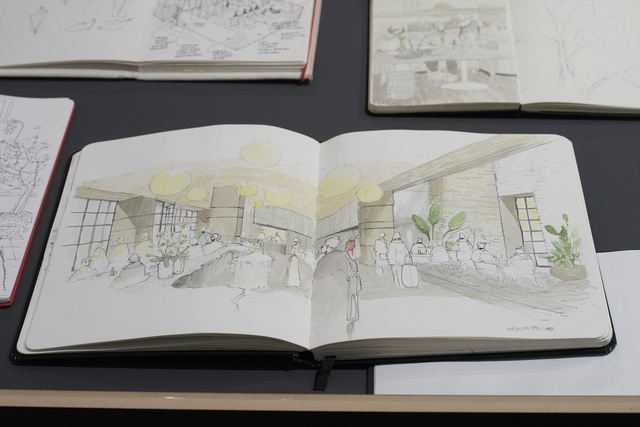
The consciousness of AI and trepidation about AI consciousness are now so pervasive that Rendered Futures, despite its forwardfocused title, might have been locked into a backward-looking gaze. An exhibition that gathered more than 70 works from the last 50 years — the oldest being David Mitchell’s 1975 pencil and pastel drawings for a house near Auckland — was intrinsically retrospective, and could easily have been cast as a valediction: RIP the architectural sketch, that historic artefact of human agency.
But curators Kim Paton, of Objectspace, and Micheal McCabe, of AUT, presented a different and more complex account of the transition in architecture from analog to digital design. Their exhibition — credit should also go to researcher Lucy Treep and catalogue editor Victoria McAdam — suggests that, as tends to be the norm with technological advancement, change in the field of architectural drawing has been, so far, a matter of and-and rather than eitheror. Thirty years after Andrew Barrie’s experiments with first-generation 3D wiremodelling software, Pete Bossley and Nat Cheshire are hand sketching on tablets, David Hockney-style, and Dajiang Tai is painting watercolours that establish the atmospheric settings for the design of hospitality interiors.
Rendered Futures was a good show to walk around. As usual, Stephen Brookbanks’ vitrines were display-worthy items in themselves, although the exhibition’s object-numbering system did take some deciphering. While the architectural community was the core audience, there were, consistent with Objectspace’s outreach intention, many access points for ‘lay’ visitors. (A benefit of a survey show is that, chances are, there’ll be something for everyone.) Rendered Futures was understandably Auckland-centric but its span was wide and extended into the blurry borderland between architecture and art. Exhibits from crossover territory included Russell Lowe’s 1995 student drawing, referencing the fantastical paper architecture of Jean-Jacques Lequeu (1757–1826), and Raukura Turei’s drawn response to a 2010 revivalist staging of a Whare Tapere theatrical performance. From another architectural frontier came the urgent pragmatism of a drawing for a composting toilet sent earlier this year by Hatch Workshop (Hannah Broatch and Mason Rattray) to Palestinian farm workers.
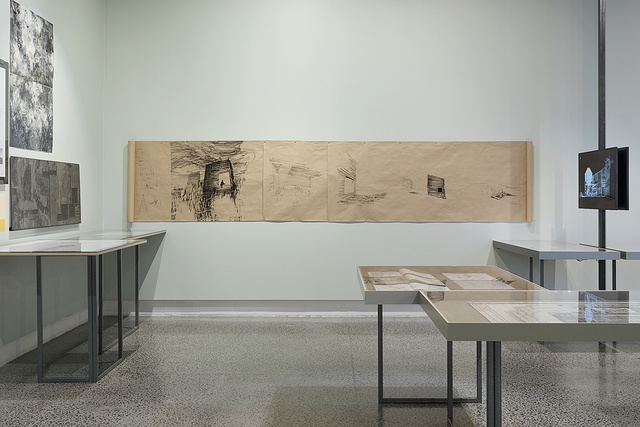
People admire freehand drawing skills and, probably, still expect architects to have them. That being the case, the exhibited sketch books of Pip Cheshire, Richard Harris and John Coop could not have failed to impress, and drawings by Icao Tiseli — illustrations marrying architecture with oceanic and celestial cartography — would only have served to delight. Innovative technology also has popular appeal and perhaps the cutest of the Rendered Futures exhibits were the tablet-and-3D-glasses versions of the ‘cyberphysical’ holographic installations, created by Uwe Rieger and Yinan Liu at the University of Auckland’s arc/sec Lab.
Rendered Futures was also a good show to think about. Ponderable topics include what might be called the ontological status, in 2025, of the architectural drawing. How far does the term stretch and, however drawing is defined, what might be its fate in the impending age of Autonomous Systems? Will minds soon meld with machines in a hands-free creative process? (Ninety years on, Walter Benjamin’s famous essay, ‘The Work of Art in the Age of Mechanical Reproduction’, has more resonance than ever.) In the meantime, one message of Rendered Futures is that, while architects must draw for work, many are also compelled to draw for pleasure. It’s just what they do.
Rendered Futures: Drawing architecture is presented by Objectspace’s strategic partner ECC and supported by The Warren Trust. Colour partner: Resene and product partner: Laminex.


